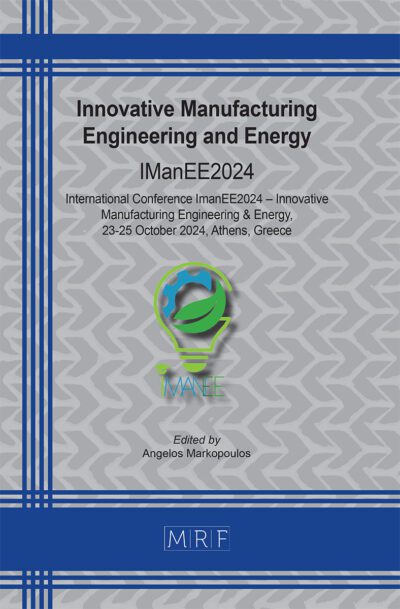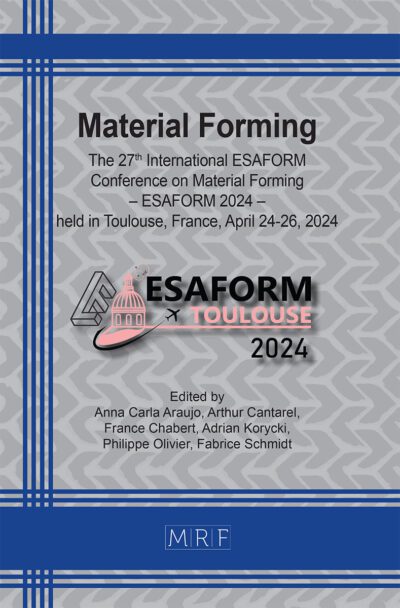Mode-I fracture toughness of flax/epoxy composites: A comparative study of autoclave and oven curing techniques
Humberto Almeida Jr, Andraž Maček, Miroslav Halilovič
Abstract. This study evaluates the Mode-I interlaminar fracture toughness of flax fibre-reinforced epoxy composites fabricated using two distinct curing methods: autoclave and vacuum-assisted oven curing. Double cantilever beam (DCB) tests were employed to assess fracture behaviour, complemented by digital image correlation (DIC). Results indicated that oven-cured laminates were 17% thicker than their autoclave-cured counterparts, a difference attributed to the higher consolidation pressure in autoclave curing, which enhances resin flow and reduces void content, leading to thinner laminates. While both curing methods yielded comparable absolute fracture toughness and strain energy release rates, the oven-cured samples exhibited higher bending stiffness, suggesting that the curing technique significantly influences the mechanical properties of flax/epoxy composites.
Keywords
Natural Fibres, Fracture Toughness, Manufacturing
Published online 5/7/2025, 8 pages
Copyright © 2025 by the author(s)
Published under license by Materials Research Forum LLC., Millersville PA, USA
Citation: Humberto Almeida Jr, Andraž Maček, Miroslav Halilovič, Mode-I fracture toughness of flax/epoxy composites: A comparative study of autoclave and oven curing techniques, Materials Research Proceedings, Vol. 54, pp 2566-2568, 2025
DOI: https://doi.org/10.21741/9781644903599-277
The article was published as article 277 of the book Material Forming
![]() Content from this work may be used under the terms of the Creative Commons Attribution 3.0 license. Any further distribution of this work must maintain attribution to the author(s) and the title of the work, journal citation and DOI.
Content from this work may be used under the terms of the Creative Commons Attribution 3.0 license. Any further distribution of this work must maintain attribution to the author(s) and the title of the work, journal citation and DOI.
References
[1] K.L. Pickering, M.G. Aruan Efendy, T.M. Le. A review of recent developments in natural fibre composites and their mechanical performance. Compos. A. 83 (2016) 98-112. https://doi.org/10.1016/j.compositesa.2015.08.038
[2] H.N. Dhakal, Z.Y. Zhang, M.O.W. Richardson. Effect of water absorption on the mechanical properties of hemp fibre reinforced unsaturated polyester composites. Compos. Sci. Technol. 67 (2007) 1674-1683. https://doi.org/10.1016/j.compscitech.2006.06.019
[3] A. Bourmaud, C. Baley. Investigations on the use of hemp and flax fibers: A comparison of tensile properties using nanoindentation. J. Compos. Mater. 44 (2010) 2887-2896. https://doi.org/10.1177/0021998310373518
[4] L. Yan, N. Chouw, K. Jayaraman. Flax fibre and its composites – A review. Compos. B Eng. 56 (2014) 296-317. https://doi.org/10.1016/j.compositesb.2013.08.014
[5] S. Belouettar, A. Abbadi, Z. Azari, R. Belouettar, P. Freres. Experimental investigation of static and fatigue behaviour of composite honeycomb materials using four-point bending tests. Compos. Struct. 87 (2009) 265-273. https://doi.org/10.1016/j.compstruct.2008.02.017
[6] G. Koronis, A. Silva, M. Fontul. Green composites: A review of adequate materials for automotive applications. Compos. B Eng. 44 (2013) 120-127. https://doi.org/10.1016/j.compositesb.2012.07.004
[7] K. Potter. Understanding the origins of defects and variability in composites manufacture. Philos. Trans. R. Soc. A Math. Phys. Eng. Sci. 367 (2009) 649-667. https://doi.org/10.1098/rsta.2008.0200
[8] P. Costa, D. Gaspar, P.A.A.P. Marques, et al. Improving the mechanical properties of natural fiber composites via interface engineering – A review. Compos. B Eng. 140 (2018) 99-112. https://doi.org/10.1016/j.compositesb.2017.11.029
[9] E.S. Greenhalgh, K. Street. Fractography of polymer composites: Current status and future issues. Compos. Sci. Technol. 68 (2008) 731-742. https://doi.org/10.1016/j.compscitech.2007.12.006
[10] R.D.S.G. Campilho, M.F.S.F. de Moura, J.J.M.S. Domingues. Mode-I fracture characterization of carbon/epoxy bonded joints using digital image correlation. Compos. Sci. Technol. 69 (2009) 1033-1038. https://doi.org/10.1016/j.compscitech.2008.11.022
[11] M.P. Ho, H. Wang, J.H. Lee, et al. Critical factors on manufacturing processes of natural fibre composites. Compos. B Eng. 43 (2012) 3549-3562. https://doi.org/10.1016/j.compositesb.2011.10.001
[12] A. Le Duigou, A. Bourmaud, C. Baley. Mechanical properties of natural fibres and their composites. In: Green Composites, CRC Press, 2014, 35-72.
[13] D.U. Shah, P.J. Schubel, M.J. Clifford. Modelling the effect of moisture absorption on the interfacial shear strength of plant fibre composites. Compos. Sci. Technol. 94 (2013) 99-107. https://doi.org/10.1016/j.compscitech.2013.03.007
[14] N. Sgriccia, M.C. Hawley, M. Misra. Characterization of natural fiber surfaces and natural fiber composites. Compos. A. 39 (2008) 1632-1637. https://doi.org/10.1016/j.compositesa.2008.07.007














